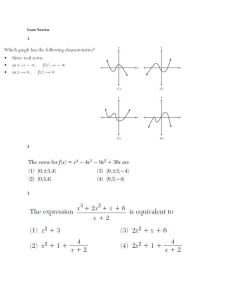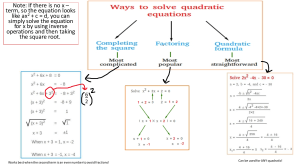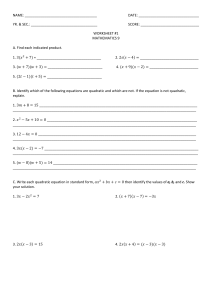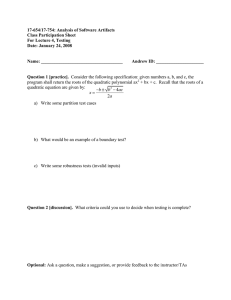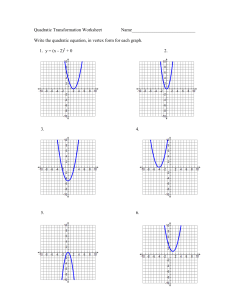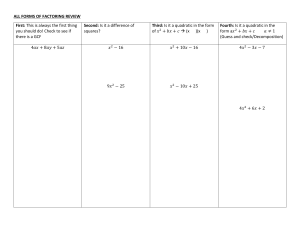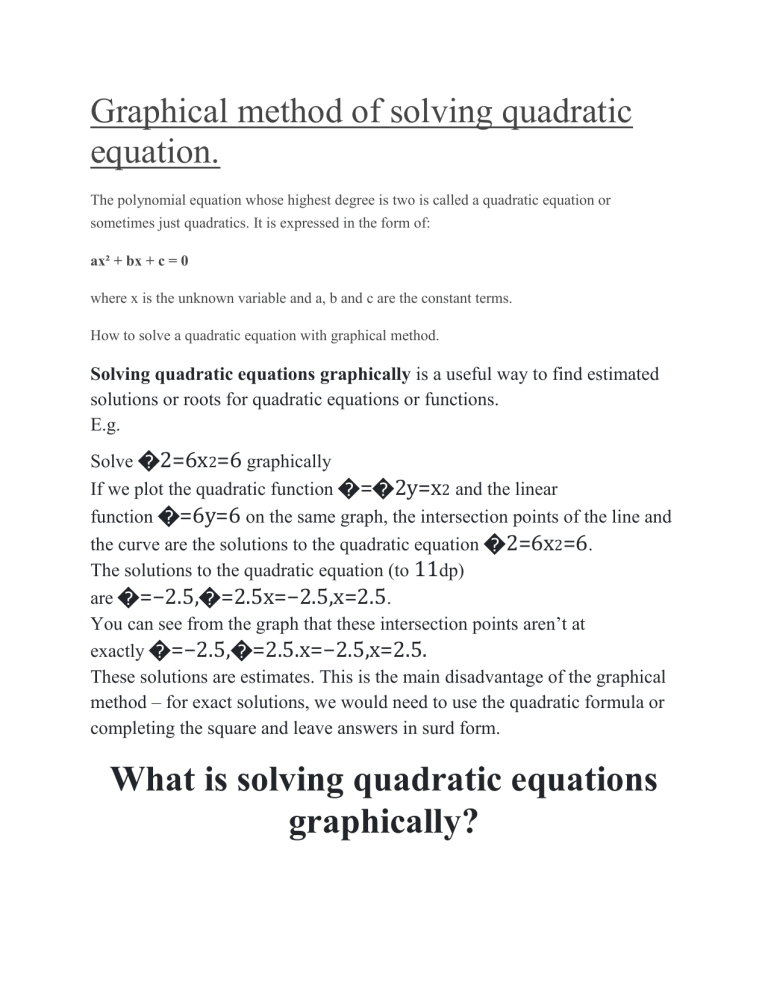
Graphical method of solving quadratic equation. The polynomial equation whose highest degree is two is called a quadratic equation or sometimes just quadratics. It is expressed in the form of: ax² + bx + c = 0 where x is the unknown variable and a, b and c are the constant terms. How to solve a quadratic equation with graphical method. Solving quadratic equations graphically is a useful way to find estimated solutions or roots for quadratic equations or functions. E.g. Solve �2=6x2=6 graphically If we plot the quadratic function �=�2y=x2 and the linear function �=6y=6 on the same graph, the intersection points of the line and the curve are the solutions to the quadratic equation �2=6x2=6. The solutions to the quadratic equation (to 11dp) are �=−2.5,�=2.5x=−2.5,x=2.5. You can see from the graph that these intersection points aren’t at exactly �=−2.5,�=2.5.x=−2.5,x=2.5. These solutions are estimates. This is the main disadvantage of the graphical method – for exact solutions, we would need to use the quadratic formula or completing the square and leave answers in surd form. What is solving quadratic equations graphically? Every quadratic equation can be represented graphically by a parabola. The xintercepts of the parabola are the solutions to the equation. Steps for Graphical Solution: 1. Plot the quadratic function. 2. Identify where the graph intersects the x-axis. These points are the solutions. Above is the graph of the quadratic function y=ax2+bx+c�=��2+��+� where a, b and c are constants. Using the graph, find : (a)(i) the scales on both axes ; (ii) the equation of the line of symmetry of the curve ; (iii) the roots of the quadratic equation ax2+bx+c=0��2+��+�=0 (b) Use the coordinates of D, E and G to find the values of the constants a, b and c hence write down the quadratic function illustrated in the graph. (c) Find the greatest value of y within the range −3≤x≤5−3≤�≤5. Explanation (a)(i) Scale : On x- axis, 2cm = 1 unit On y- axis, 2cm = 5 units. (ii) Equation of line of symmetry is x = 1.25. (iii) Roots of the equation ax2+bx +c=0are x =0.25 are x = 0.25 and x = 2.25. (b) Coordinates are D (0, 1), E (1, -2) and G(3, 4). Substituting for y and x in ax2+bx+ c = y D (0, 1) : 1=a(02)+b(0)+c⟹ c=1 E (1, -2) : −2=a(12)+b(1)+c⟹−2=a+ b+ c a+ b=−2−1=−3... (1) G (3, 4) : 4=a(32)+b(3)+c⟹4=9a+3b+c 9a+3b=4−1=3... (2) ⟹3a+b=1...(2a) (2a) - (1) : 2a=4⟹a=2 a + b=−3⟹2+b=−3 b=−3−2=−5 ∴ The equation is y=2x2−5x+1 (c) The greatest value of y = 33.5.
